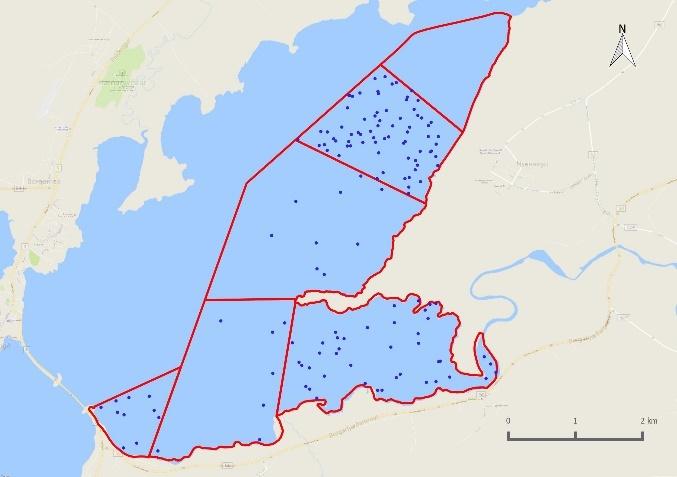
3 minute read
Arctic Tern
Arctic Tern
Sterna paradisaea Kría
Arctic Terns were first recorded on 3rd May, and peaks of 627 and 682 were recorded on 15th and 23rd May, respectively, as birds moved through the site. Smaller numbers, c. 30-50 birds were present throughout June, July and the beginning of August, with the last record being on the 7th August. Birds were mostly observed foraging or loafing in the southernmost three subsites: Flæðhöfðasker (Est 6), Grjóteyrarklakkur (Est 1) and Kistufjörđur (Est 2).
There was a breeding colony adjacent to Flæðhöfðasker (Est 6) at 64.527617, -21.882915. No dedicated nest count was undertaken, so no information on colony size or productivity cannot be provided. However, there were 53 and 45 individuals present in the colony on 5th and 7th June, respectively, several unfledged chicks were observed on 10thand 24th July. There was considerable disturbance to the colony throughout the breeding season, as the area is used as a car park for recreational activities such as fishing and dog-walking. Furthermore, several piles of gravel, and occasionally road maintenance machinery, were stored at this location. Such machinery was present on 19th July, and there was loading/unloading of gravel in the colony in the days before and after this. As this colony is directly adjacent to two roads, it is expected that the nesting terns are relatively resilient to vehicular disturbance, but their nests and flightless chicks are at risk from trampling by humans or vehicles.
Number of individuals 800 700 600 500 400 300 200 100 0 Low-tide Rising-tide

10 11 12 13 14 15 16 17 18 19 20 21 22 23 24 25 26 27 28 29 30 31 32 33 34 35 36 37 38 39 40 41 42 43 Mar Apr May Jun Jul Aug Sep Oct Week number and month
Figure 3-131. Number of Sterna paradisaea recorded during weekly low tide and rising tide estuarine surveys in the Andakíll Ramsar site between 12th March and 25th October 2017.
(a) Low tide (b) Rising tide
Figure 3-132. Relative abundance of Sterna paradisaea during weekly (a) low tide and (b) rising tide estuarine surveys in the Andakíll Ramsar site between 12th March and 25th October 2017. Dots are randomly positioned within each subsite. While each dot refers to a single bird, it refers to the bird’s presence in that subsite only, and not the bird’s actual location.

Figure 3-133. Relative abundance during (a) spring and (b) autumn of Sterna paradisaea counted on twice-weekly estuarine surveys in the Andakíll Ramsar site in 2017. Spring = 12th March - 7th June; Autumn = 12

(a) Spring (b) Autumn

th June - 25th
October. The number of dots in each subsite refers to the total number of birdrecords (from weekly low tide and rising tide surveys) in spring and autumn, adjusted for the length of the season, and reflects the species’ abundance in that season, not the specific location of birds.
Figure 3-134. Proportion of foraging and roosting Sterna paradisaea during weekly (a) low tide and (b) rising tide estuarine surveys in six subsites in the Andakíll Ramsar site between 12th March and 25th October 2017.

(a) Low tide (b) Rising tide












